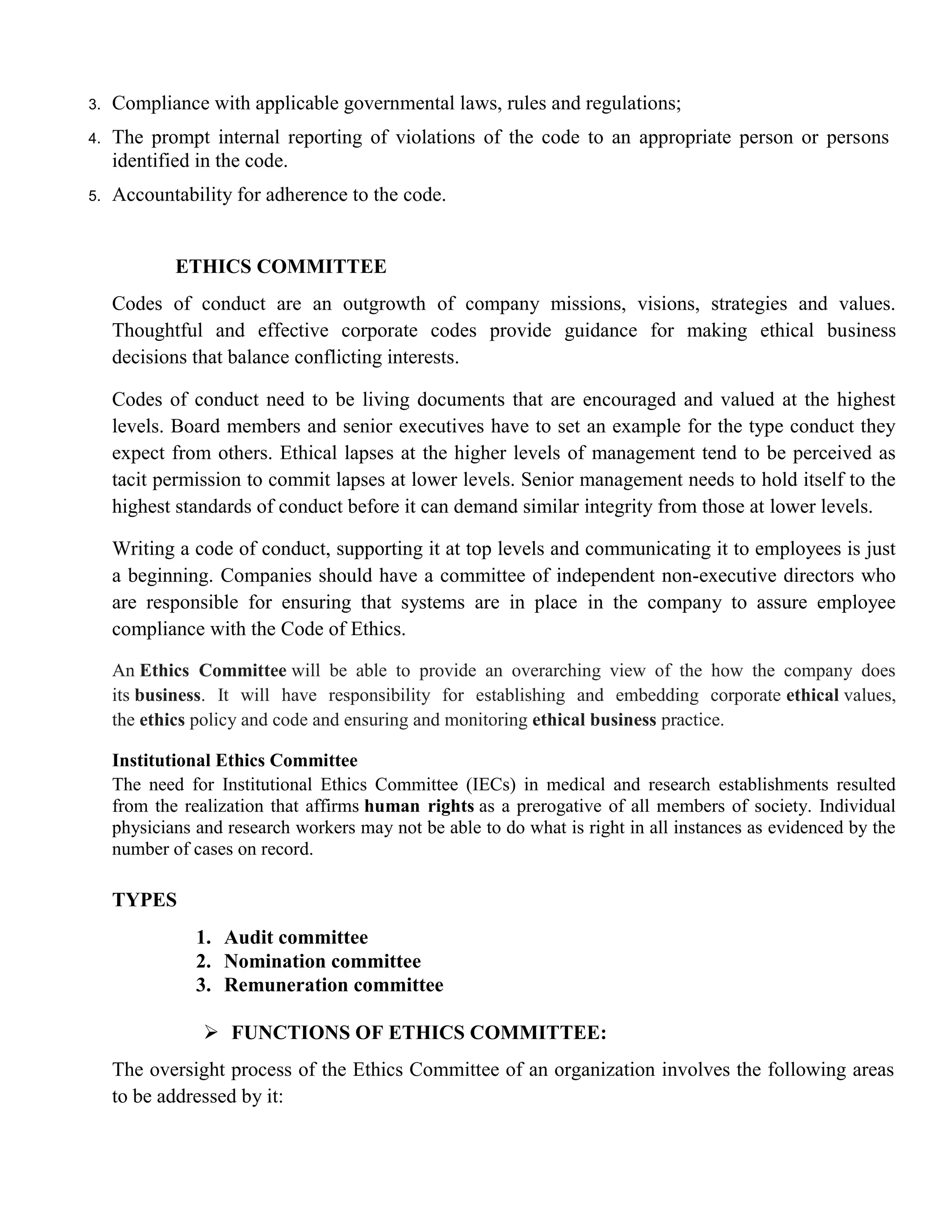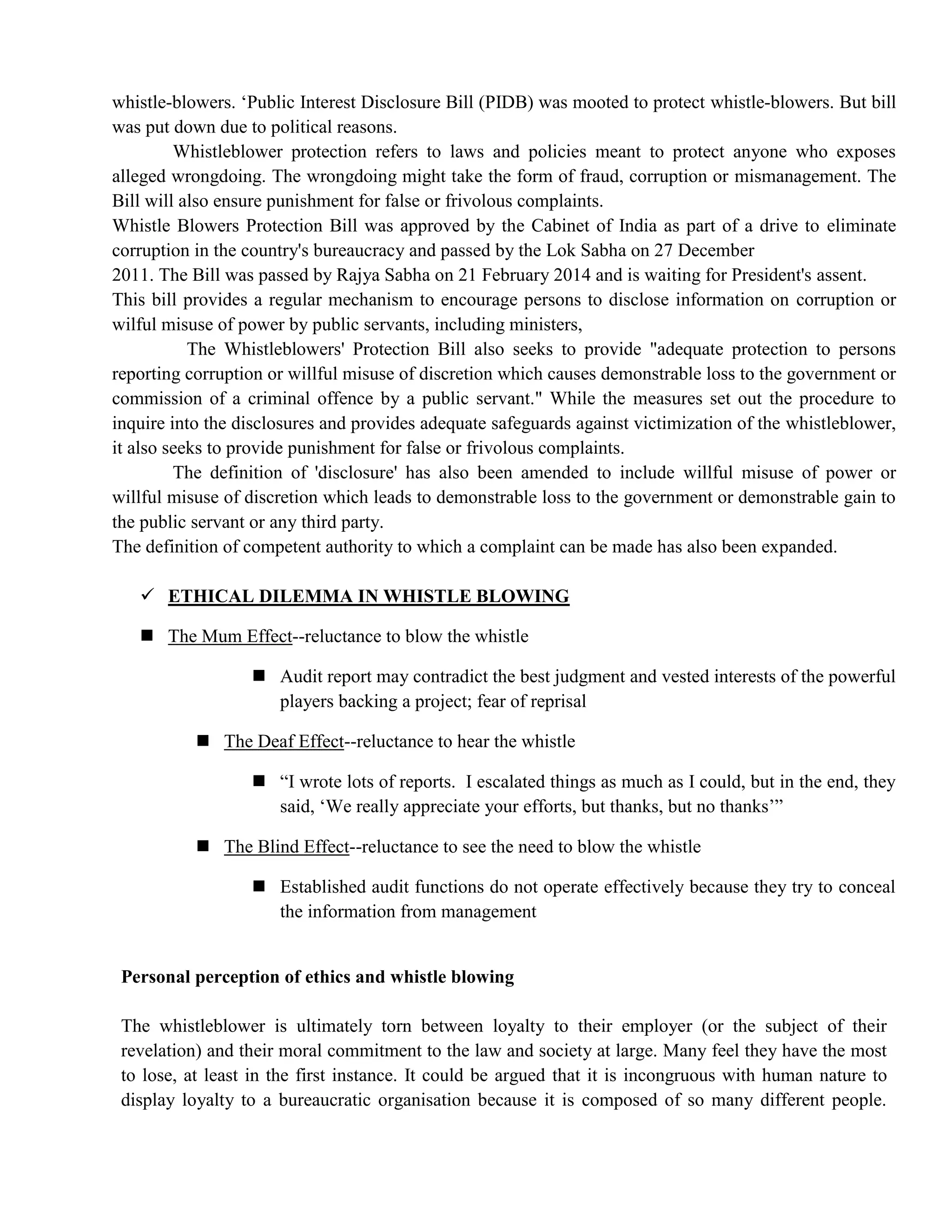This document outlines features and best practices for establishing an effective organizational ethics program. It discusses key components like a code of ethics, training, and reporting mechanisms. An effective program addresses both compliance and integrity through comprehensive risk assessment, clear policies and messaging, ongoing training, and measures to ensure an ethical culture. The document also describes 12 elements of a best-in-practice ethics program, including having a vision and values statement, ethics officer and committee, and monitoring systems to prevent and address ethical issues that may arise.
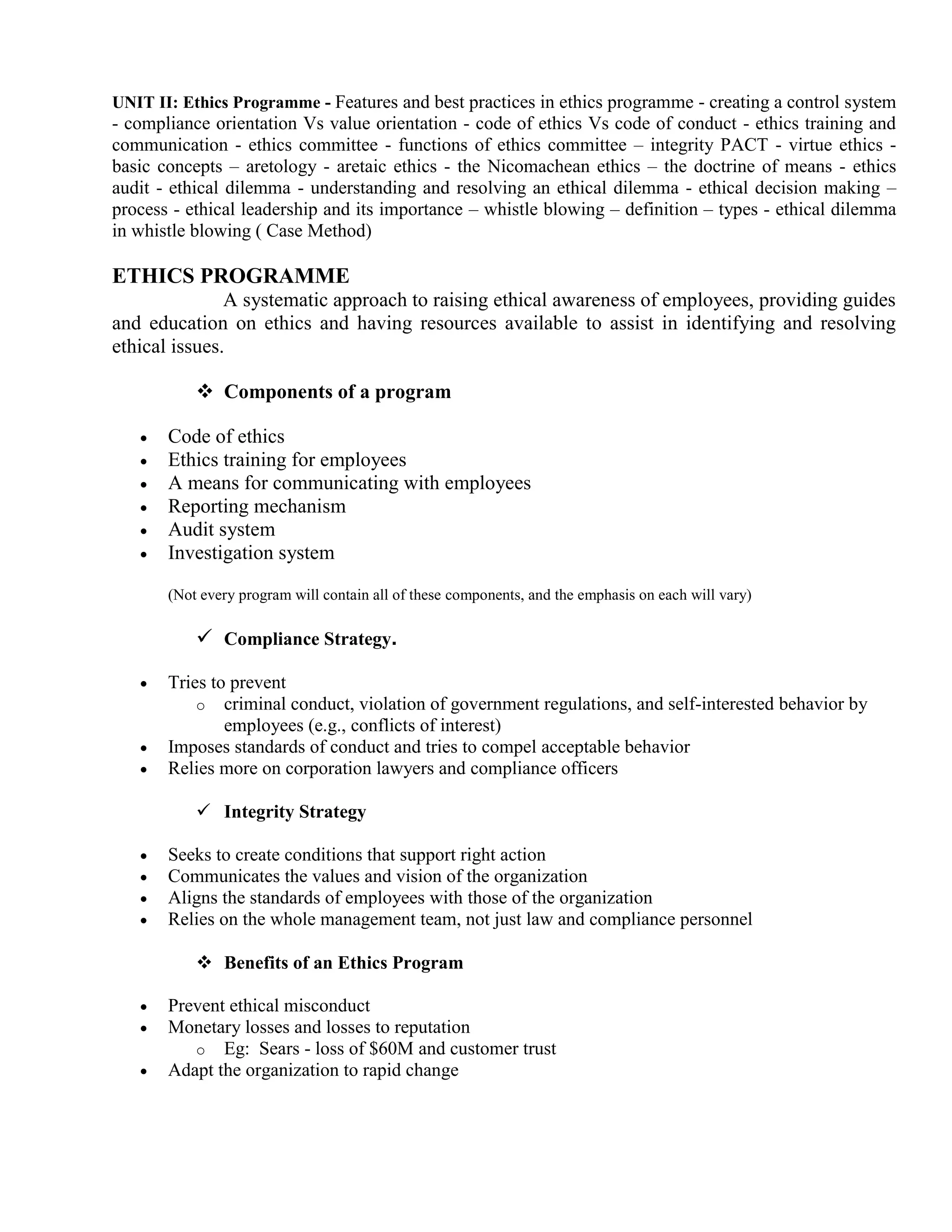



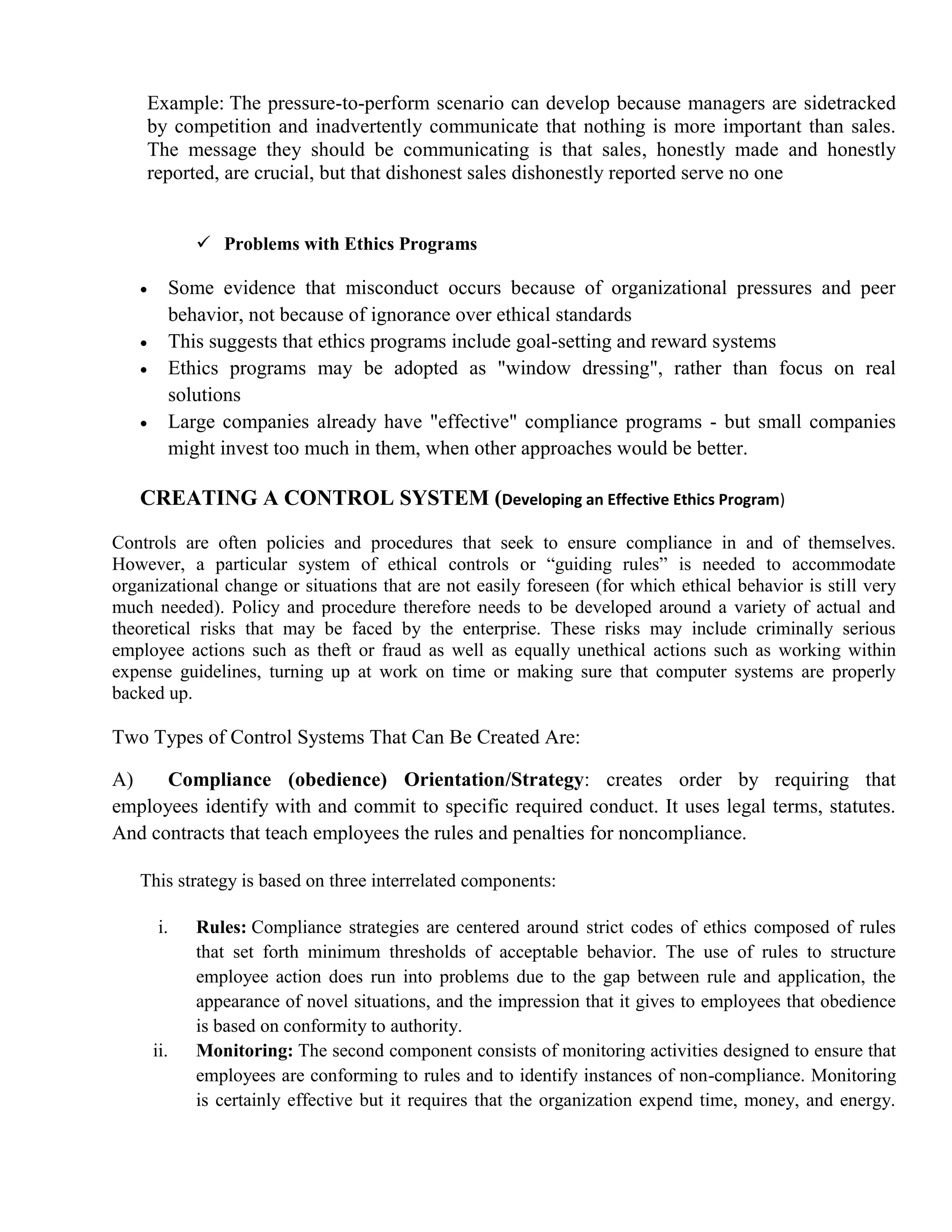
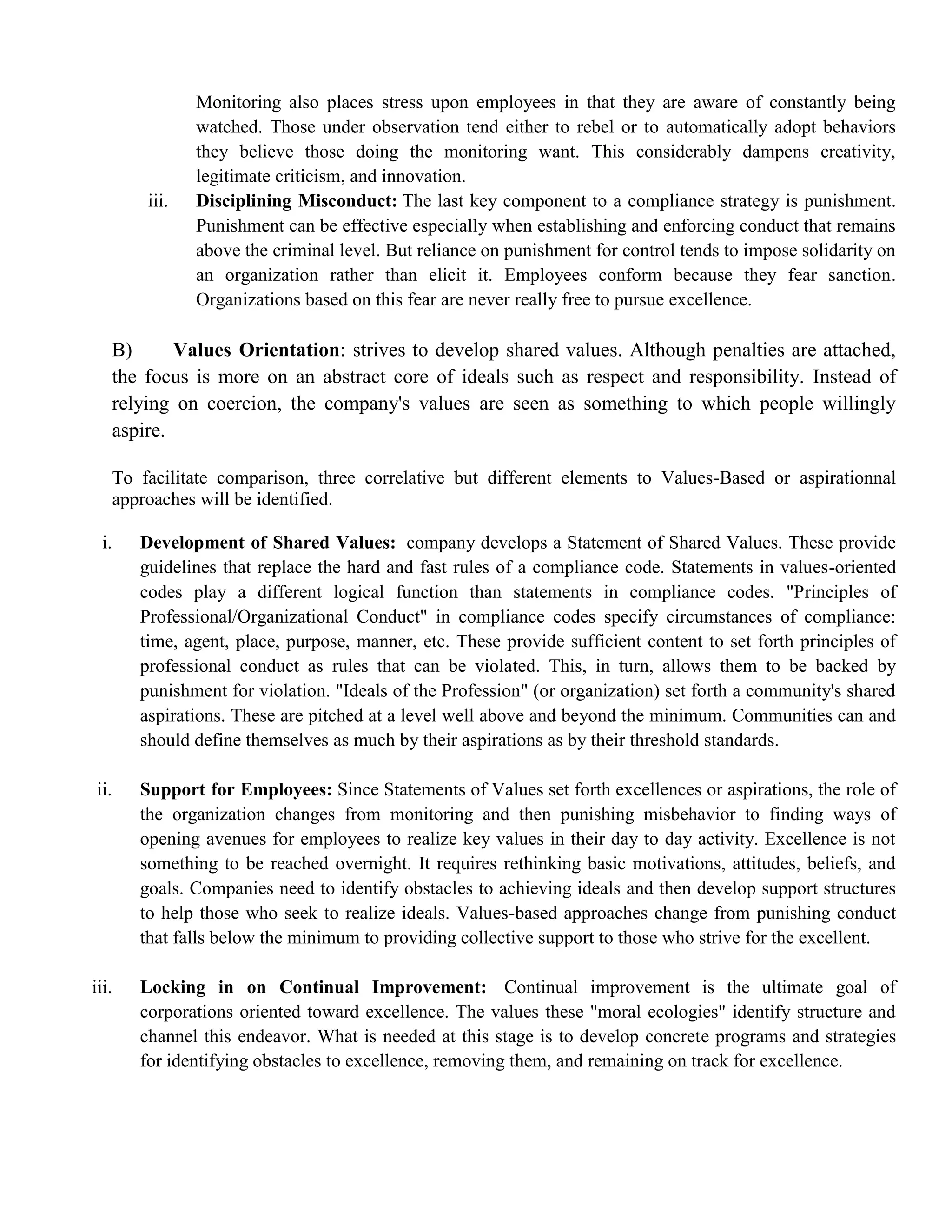





![The fourth mistake is developing program materials that do not address the needs of the
average employee. Many compliance programs are designed by lawyers to ensure that the company is
legally protected.
The fifth common mistake made in implementing ethics programs in transferring an
"American" program to a firm's international operations.
A final common mistake is designing an ethics program that is little more than a series of
lectures. In such cases, participants typically recall less than 15 percent the day after the lecture. A more
practical solution is to allow employees to practice the skills they learn through case studies or small
group exercises.
ETHICS TRAINING AND COMMUNICATION
A major step in developing an effective ethics program is implementing a training
program and communication system to communicate and educate employees about the firm‘s
ethical standards.
Training can educate employees about the firm‘s policies and expectations, as well
as relevant laws and regulations and general social standards. Training programs can make
employees aware of available resources, support systems, and designated personnel who can
assist them with ethical and legal advice. They can also empower employees to ask tough
questions and make ethical decisions. Many companies are now incorporating ethics training
into their employee and management development training efforts.
If ethics training is to be effective, it must start with a foundation, a code of
ethics, a procedure for airing ethical concerns, line and staff involvements, and executive
priorities on ethics that are communicated to employees. Managers from every department must
be involved in the development of an ethics training program. Training and communication
initiatives should reflect the unique characteristics of an organization: its size, culture, values,
management style, and employee base. It is important for the ethics program to differentiate
between personal and organizational ethics.
To be successful, business ethics programs should educate employees about
formal ethical frameworks and more for analyzing business ethics issue. Then employees can
base ethical decisions on their knowledge of choices rather than on emotions.
Written standards deter wrong doing and promote:
1. Honest and ethical conduct, including the ethical handling of actual or apparent conflicts of
interest between personal and professional relationships;
2. Full, fair, accurate, timely, and understandable disclosure in reports and documents that a
company files with, or submits to, the Commission and in other public communications made
by the [company];](https://image.slidesharecdn.com/ethics2-180802054315/75/Ethics-module2-kerala-univer-12-2048.jpg)
